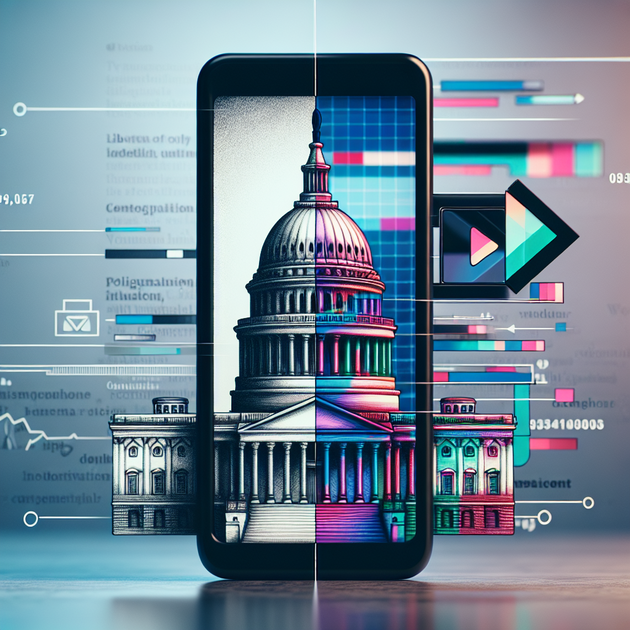Ever wondered what happens when politicians set their sights on your favorite app? The latest buzz is that the White House may turn TikTok into a right wing propaganda machine—and that’s got everyone talking.
Why Is the White House Targeting TikTok?
The debate around social media isn’t new, but the idea of the *White House TikTok* strategy has taken center stage recently. With over 150 million U.S. users, TikTok isn’t just about dances and memes anymore; it’s become a digital town square where ideas spread fast—sometimes faster than news outlets or politicians can keep up.
So why the sudden interest? There are a couple of reasons:
- Influence: Young voters spend hours on TikTok—shaping opinions and trends.
- Narrative Control: Whoever drives the conversation online often influences real-world debates.
- Election Cycles: With major elections on the horizon, every channel counts.
The speculation is that if the government gains more control or leverage over platforms like TikTok (whether through regulation or ownership changes), they might try to steer narratives toward their preferred political agenda.
What Would “Right Wing Propaganda” Look Like on Social Media?
When folks hear “propaganda machine,” images of state-run TV probably come to mind. But with apps like TikTok, things get way subtler—and stickier. Instead of obvious commercials or speeches, imagine short clips blending humor with political jabs or influencers nudging viewers toward certain viewpoints without ever saying “vote for X.”
Here’s what experts worry about if the *White House TikTok* scenario becomes reality:
- Algorithm tweaks favoring specific political content
- Banning or shadowbanning creators who challenge official narratives
- Flooding feeds with polished pro-government messages
- Direct partnerships between officials and popular influencers
- Less room for dissenting voices or independent news
It’s not just about what gets posted—it’s about what gets seen (or hidden) in your feed.
The Censorship Question: Who Really Controls Your Feed?
A lot of folks worry about foreign influence campaigns on apps like TikTok. But when the government starts talking about “protecting” users by curating content itself—well, that gets tricky fast. Is it really safer when Washington decides what’s true?
One Redditor put it simply: “If you replace one gatekeeper with another, are we really better off?” That comment stuck with me. It captures the anxiety many feel—trading one kind of bias for another doesn’t sound like progress.
Let’s face it—social media already shapes how we see the world. If those platforms become megaphones for whoever’s in charge politically at the time, open debate might be replaced by echo chambers.
A Real-World Glimpse: When Algorithms Meet Politics
A friend of mine works in digital marketing and once ran an ad campaign during election season. She noticed how quickly posts that mentioned certain issues would either get massive reach—or suddenly disappear from timelines without warning. No explanation given.
Now imagine if those levers were pulled not just by Silicon Valley engineers but by federal officials with their own agendas. That kind of power over information flow could make or break public trust in both technology and democracy.
- Your feed might look different every election cycle.
- The definition of “misinformation” could change overnight.
- Creators could find themselves silenced for stepping out of line.
It sounds dystopian—but these are very real concerns raised whenever talk turns to government oversight and social media censorship.
Where Does This Leave Everyday Users?
Most people just want their favorite apps to stay fun—and maybe a little informative—without becoming battlegrounds for politicians’ talking points. If *White House TikTok* becomes shorthand for heavy-handed narrative control, what happens to authentic voices?
This debate isn’t just about left vs right—it’s about who gets to shape public conversations in America’s digital spaces.
So here’s a question worth considering next time you scroll through your For You Page: Who do you want deciding what you see—and who decides which voices are heard?

Leave a Reply